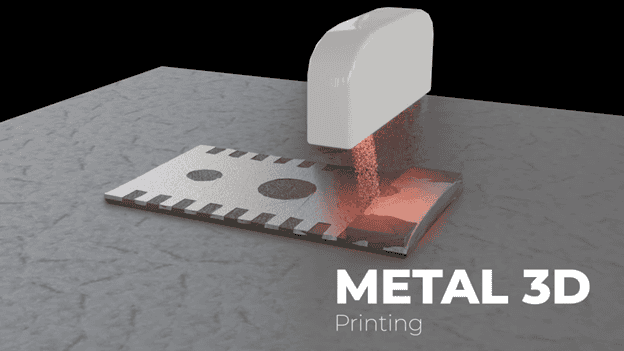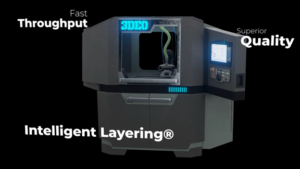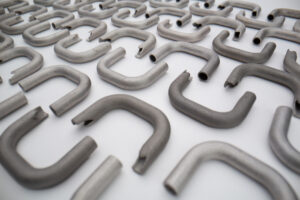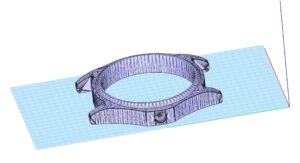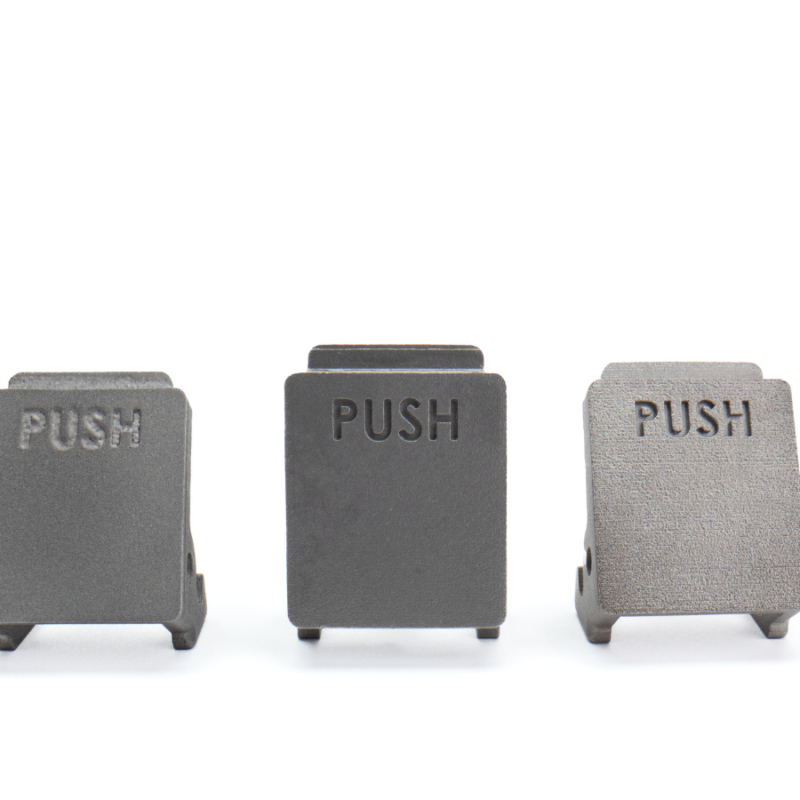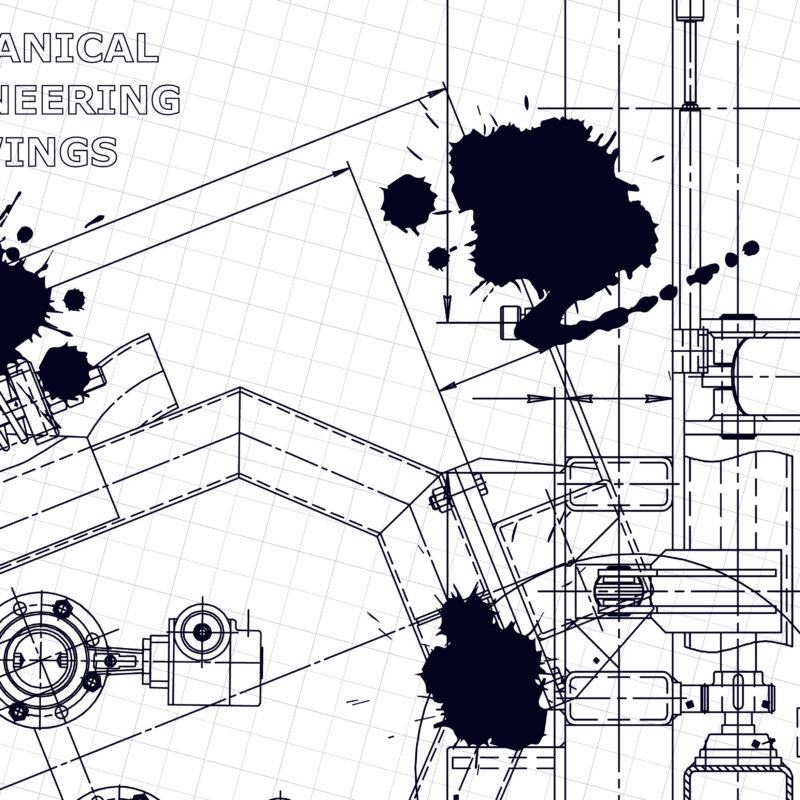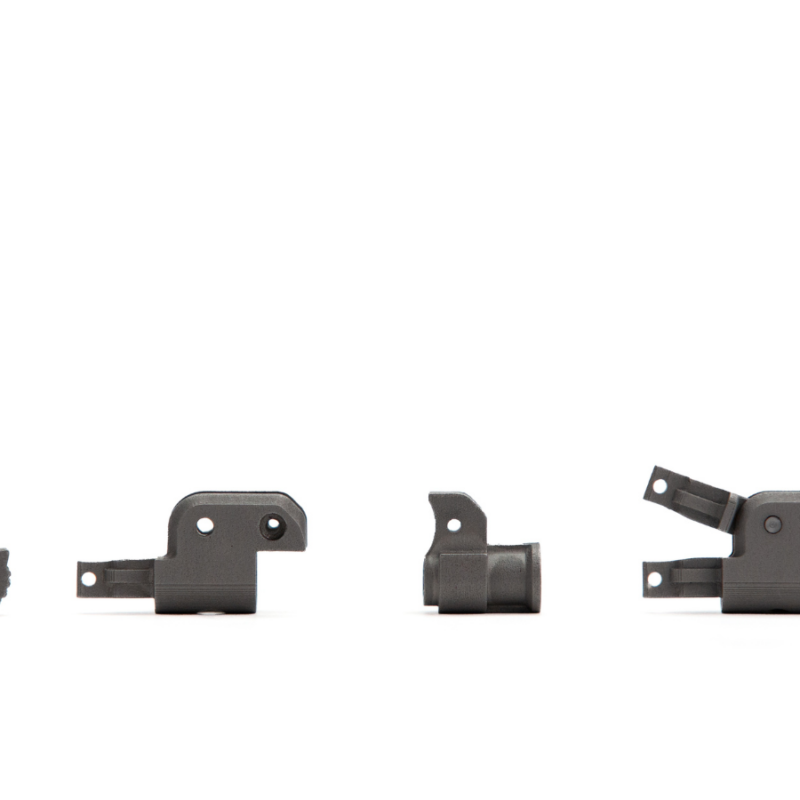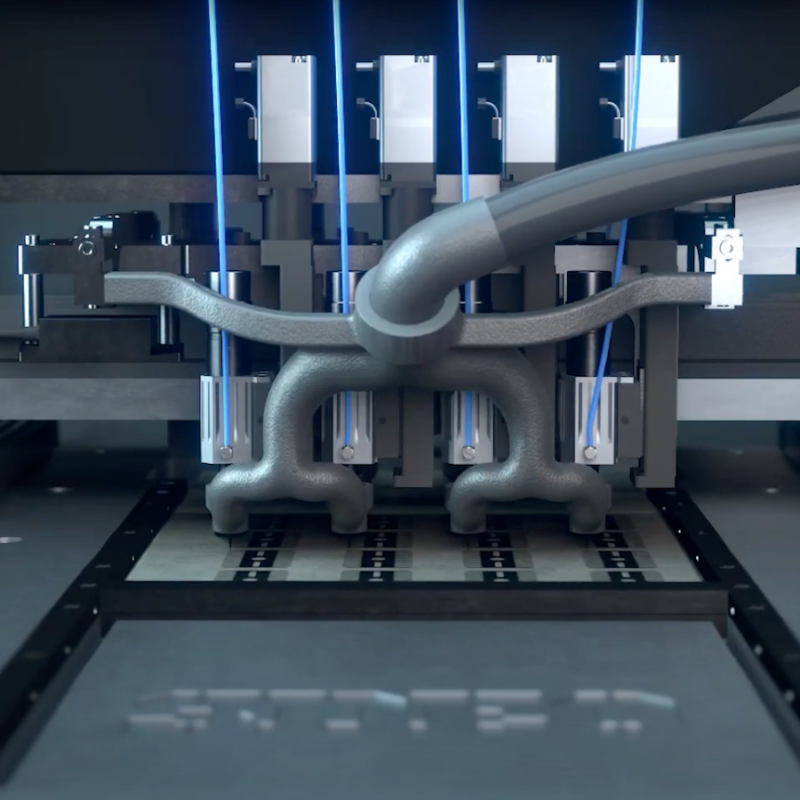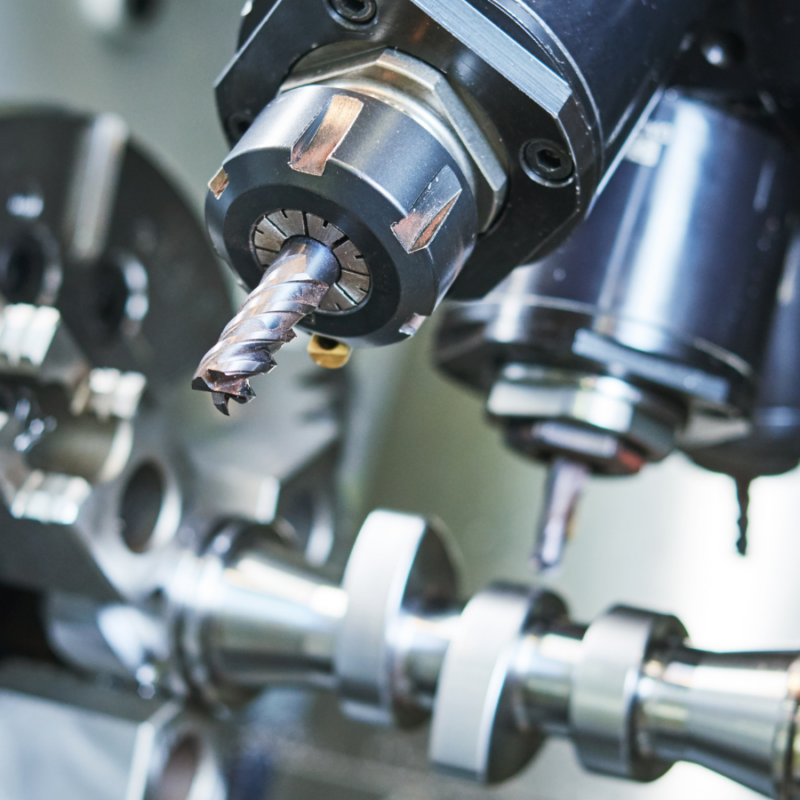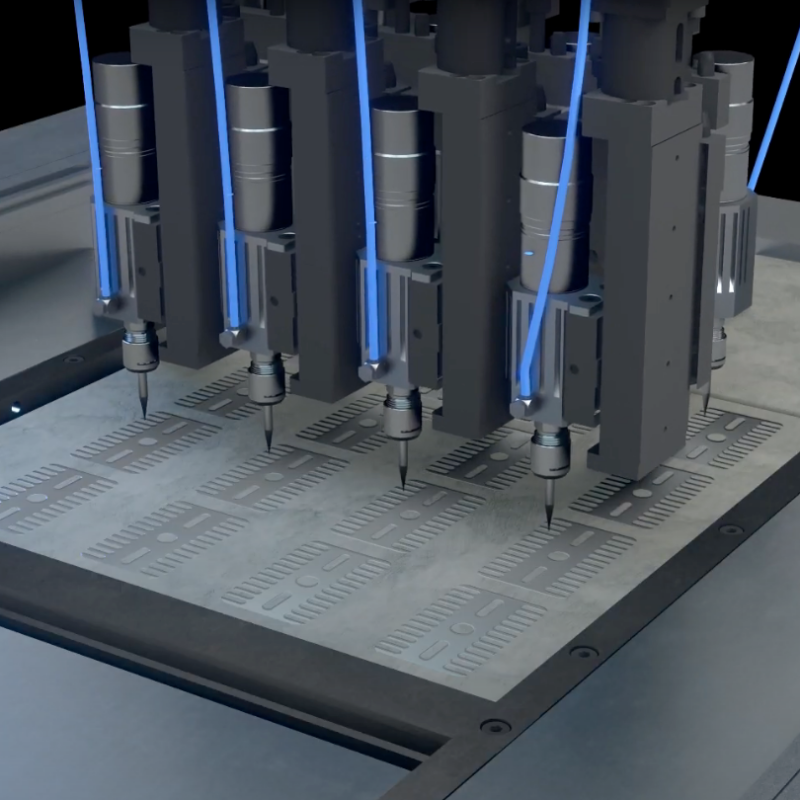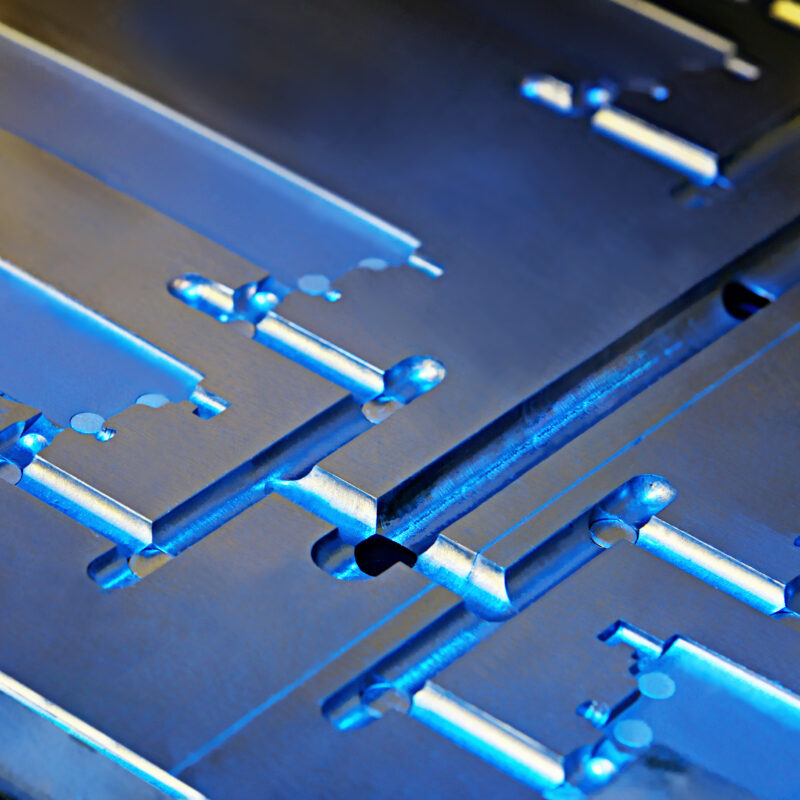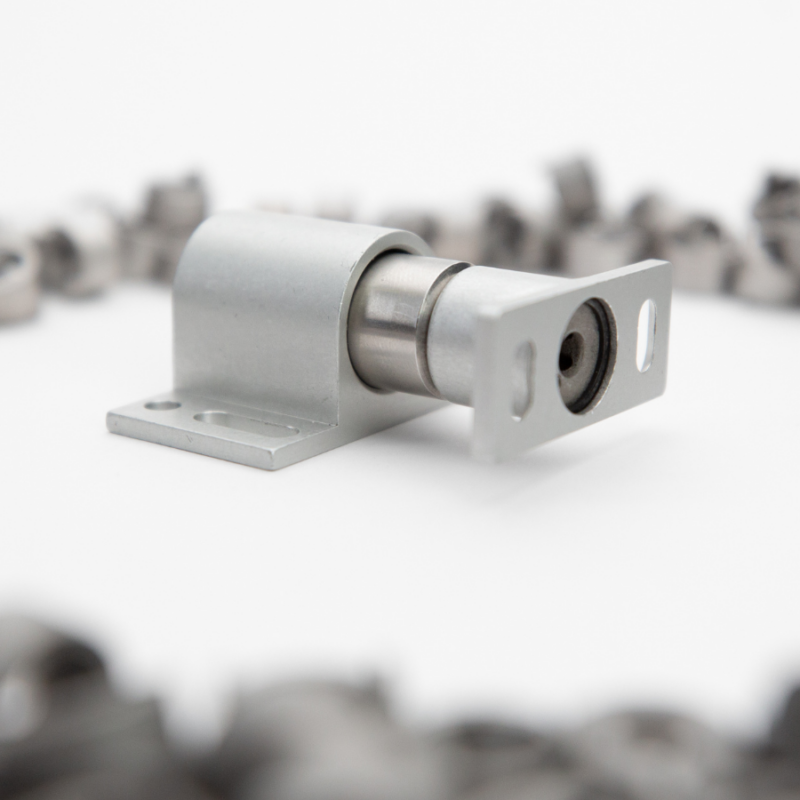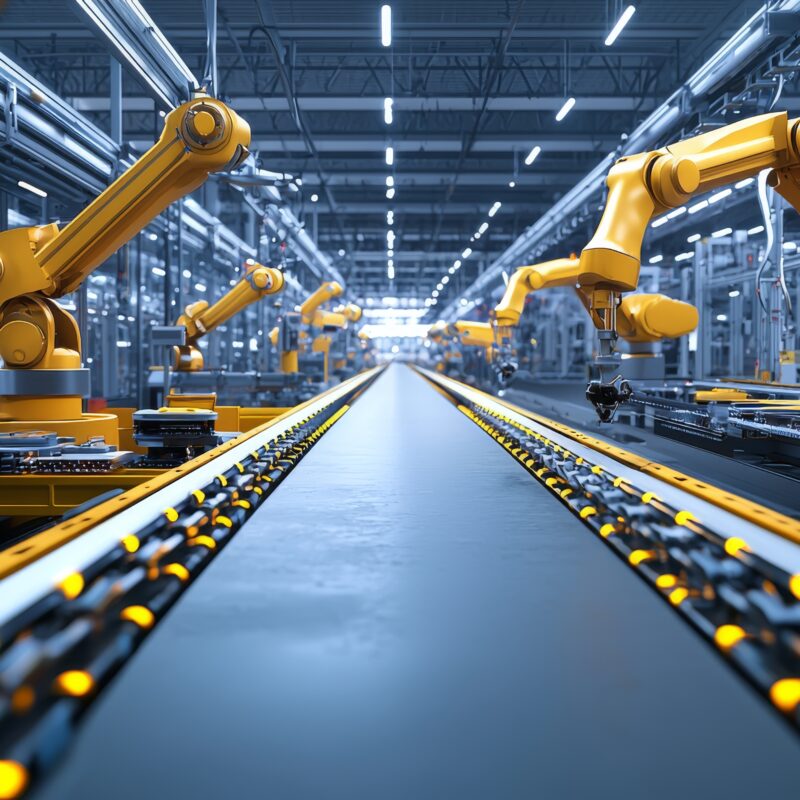The field of 3D printing has undergone numerous advancements, particularly in metal 3D printing. 3DEO is positioned as a leader in the metal 3D printing industry, offering a seamless transition from prototyping to scale and combining high volume metal part production capabilities with its advanced Design for Additive Manufacturing services.
Also known as 3D metal printing or Additive Manufacturing, this groundbreaking technology has emerged as a game-changer across the manufacturing industry. From rapid prototyping to mass production, metal 3D printing offers unprecedented production opportunities for designers, engineers and businesses to innovate and commercialize with greater value and efficiency
This complete guide will explore the ins and outs of metal 3D printing, its advantages and disadvantages, prototyping benefits, mass production possibilities, the handoff from prototyping to scale, common differences between service providers and the significance of Design for Additive Manufacturing in this realm.
What is Metal 3D Printing?
3D metal printing is an Additive Manufacturing process that creates three-dimensional objects by depositing layer upon layer of metal material. This innovative technique has its roots in stereolithography, a process developed in the 1980s, but it has significantly evolved since then.
Unlike traditional subtractive manufacturing methods, where material is cut away from a solid block, 3D metal printing builds components layer by layer, offering greater design flexibility and customization possibilities than traditional production methods.
Pros and Cons of Metal 3D Printing
Pros:
- Complex Geometries: Metal 3D printing allows for the fabrication of intricate designs that would be impractical or impossible to achieve with conventional methods. This ability is especially advantageous in the aerospace, medical and automotive industries.
- Rapid Prototyping: Prototyping with metal 3D printing significantly accelerates product development cycles. It allows designers to test multiple iterations quickly, saving both time and resources.
- Reduced Waste: Additive Manufacturing generates less waste compared to subtractive methods. It promotes sustainability and reduces material costs, making it a more environmentally friendly option.
- Customization and Personalization: Metal 3D printing allows for on-demand production of personalized products, catering to specific customer needs and preferences.
- Lightweight: The ability to optimize designs for strength-to-weight ratios leads to lighter components, which is particularly valuable in industries where weight reduction is critical, such as aerospace.
Cons:
- Material Limitations: While metal 3D printing offers a wide range of compatible materials, the selection can be more limited compared to traditional manufacturing methods.
- Process Complexity: Metal 3D printing involves a more intricate process than traditional manufacturing, demanding skilled operators and engineers.
- Build Size Restrictions: The build size of metal 3D printers can be a limiting factor when producing large-scale components and varies by platform.
Prototyping Benefits of Metal 3D Printing
One of the most significant advantages of metal 3D printing is its impact on prototyping. Traditionally, prototyping was a time-consuming and costly phase in the product development cycle, often involving the creation of expensive tooling and molds, as well as large upfront costs.
With metal 3D printing, designers can now create functional prototypes directly from digital designs in a fraction of the time and at a minimal cost.
Rapid Iterations: Metal 3D printing allows for rapid design iterations. Engineers can quickly test various versions of a part and make design improvements without the need for new tooling or production setup.
Complex Assemblies: Prototyping with metal 3D printing enables the fabrication of complex assemblies as a single part, reducing the need for assembly and post-processing steps.
Customization and Personalization: Manufacturers can offer personalized products and tailored solutions to meet individual customer requirements, fostering customer satisfaction and loyalty.
Proof of Concept Validation: Metal 3D printed prototypes can be subjected to functional tests and real-world simulations, helping to validate the feasibility of a design before investing in mass production.
Cost Savings: By eliminating the need for specialized tooling and reducing the number of manual labor hours, metal 3D printing significantly reduces prototyping costs.
Mass Production and Scale Considerations with Metal 3D Printing
While metal 3D printing started as a technology primarily focused on prototyping, advancements in the field have opened up new possibilities for mass production. However, transitioning from prototyping to mass production with metal 3D printing presents unique challenges that businesses must address.
- Production Speed and Throughput: Mass production requires metal 3D printers with higher throughput and faster print speeds to meet demand. Companies must invest in industrial-grade equipment capable of handling high-volume production.
- Economies of Scale: To be cost-effective, manufacturers need to achieve economies of scale with metal 3D printing. This may involve optimizing part nesting, using larger build volumes and streamlining post-processing steps.
- Quality Control and Consistency: Consistency and quality control are vital in mass production. Ensuring that each metal 3D printed part meets stringent quality standards requires robust process monitoring and inspection protocols.
- Material Availability and Cost: As production scales up, material availability and cost become more critical. Manufacturers must establish reliable supply chains for metal powders and negotiate favorable contracts.
- Post-Processing Automation: Mass production demands efficient post-processing. Implementing automated post-processing solutions can reduce lead times and increase productivity.
Handoff from Prototyping to Scale
In 3D printing operations, the handoff for prototyping to scale is a critical transition in which production switches from creating an ideal prototype and testing it to increasing volume quickly.
The transition from prototyping to mass production involves several crucial steps:
Process Optimization: During the prototyping phase, companies should focus on optimizing the metal 3D printing process for the specific part design. This includes fine-tuning print parameters, selecting the right metal alloy and evaluating the potential for post-processing automation.
Design for Manufacturability: Designers must consider the scalability of the part design from the outset. This involves reviewing geometries, reducing overhangs and minimizing the need for support structures.
Testing and Validation: Before scaling up production, manufacturers need to conduct rigorous testing and validation on the final prototype. This ensures that the part meets required performance standards and that the metal 3D printing process can consistently produce high-quality parts.
Production Planning: Establishing a comprehensive production plan is crucial. This includes determining production volumes, setting up quality control measures and defining key performance indicators (KPIs).
Quality Assurance: Implementing a robust quality assurance process is essential for maintaining consistency and ensuring the quality of mass-produced parts. This includes real-time process monitoring, statistical process control and continuous improvement initiatives.
Differences Between Metal 3D Printing Service Providers
In the metal 3D printing industry, 3DEO is a leader in speed to market, transitioning from prototyping to scale, design flexibility and efficiency for the medical, aerospace, industrial and consumer products industries.
When choosing a metal 3D printing service provider, businesses should consider various factors:
- Technology and Equipment: Different providers may offer various metal 3D printing technologies, such as selective laser melting (SLM) or direct metal laser sintering (DMLS). It’s crucial to understand the capabilities and limitations of each technology in the context of your specific needs. 3DEO’s proprietary Intelligent Layering metal 3D printing technology is competitive with traditional manufacturing methods with the advantage of far greater design flexibility and no upfront costs.
- Material Selection: Providers may have different material options available. Businesses should ensure that their chosen provider can work with the specific metal alloy required for their application. 3DEO offers 316L stainless steel, 17-4PH stainless steel, and pure copper as additive material options available for both prototyping and scalable production.
- Lead Times: Turnaround times can vary between service providers. Businesses must consider their production schedule and how well it aligns with the provider’s lead times.
- Quality and Certification: Quality assurance is paramount in 3D metal printing to ensure that each part meets the required standards. Ask the service provider about their quality control processes, inspection methods and certifications. ISO certifications and adherence to industry standards, such as ASTM International or ISO 9001, demonstrate the provider’s commitment to quality.
- Cost and Lead Time: While cost should not be the sole determinant, it is undoubtedly a crucial factor for most businesses. Obtain detailed quotes from multiple service providers and analyze their pricing structure. Be cautious of unusually low prices, as they may indicate compromises in quality or support. Additionally, consider the provider’s lead times and whether they align with your project’s timeline.
- Scalability and Capacity: Evaluate the scalability and capacity of the 3D metal printing service provider. Can they handle larger production volumes if your business scales up? Flexibility and quick adaptability are vital for companies experiencing fluctuations in demand or those exploring rapid prototyping options.
- Post-Processing Capabilities: Post-processing is an essential aspect of 3D metal printing, as it affects the final surface finish and mechanical properties of the parts. Inquire about the provider’s post-processing capabilities, such as heat treatment, machining and finishing, to ensure that your parts meet the desired specifications.
- Exploring Additional Services: Don’t overlook the value of additional services such as design and engineering. 3DEO excels in this area, offering comprehensive design and engineering services alongside their manufacturing capabilities. This integrated approach ensures that clients receive expert guidance in transforming initial concepts into optimized, print-ready designs. By combining design, engineering and production under one roof, 3DEO provides a streamlined, efficient process, especially crucial in industries demanding high precision and complex designs.
Design for Additive Manufacturing in the Realm of Metal 3D Printing
“Design for Additive Manufacturing” (DfAM), is a set of principles and guidelines tailored to exploit the unique capabilities and constraints of metal 3D printing. This article will delve into what DfAM means in the context of metal 3D printing, its significance and the key considerations that designers must take into account to harness the full potential of this cutting-edge technology.
Understanding Design for Additive Manufacturing (DfAM)
Design for Additive Manufacturing is an iterative approach that focuses on optimizing the design of a part to fully leverage the advantages offered by metal 3D printing. Unlike traditional subtractive manufacturing design methods, which often lead to material wastage and design limitations, DfAM empowers engineers to conceive and construct complex shapes, lattices and internal structures that were previously unachievable.
By capitalizing on AM’s layer-by-layer process, DfAM enables improved mechanical properties, reduced weight, increased functionality and enhanced performance in the final metal 3D-printed components.
Key Considerations in DfAM for Metal 3D Printing
- Design Freedom: DfAM allows designers to unleash their creativity by breaking free from the constraints of traditional manufacturing processes. Metal 3D printing facilitates the fabrication of intricate, organic and highly customizable shapes, opening up new possibilities for innovative designs.
- Support Structures: Designers must consider if they’ll need support structures during the metal 3D printing process, depending on the technology. Properly designed supports are crucial to prevent deformations and ensure accuracy during printing, while also being easily removable to minimize post-processing efforts. 3DEO’s Intelligent Layering®, however, does not require supports.
- Overhangs and Angles: Designers need to be mindful of overhangs and angles that could lead to potential defects or warpage in metal 3D printing. Incorporating gradual angles and chamfers can help ensure better surface quality and structural integrity in the final part.
- Material Selection: Different metal powders used in 3D printing come with varying properties and process parameters. Designers must carefully choose the suitable material for the specific application, considering factors such as mechanical properties, corrosion resistance and thermal conductivity.
- Part Consolidation: One of the advantages of metal 3D printing is the ability to consolidate multiple parts into a single complex structure. DfAM enables the integration of various components, reducing assembly requirements and enhancing overall part efficiency.
- Lightweighting: Metal 3D printing enables the creation of lattice structures that maintain structural integrity while significantly reducing weight. This is particularly important in industries like aerospace and automotive, where lightweight components lead to improved fuel efficiency and performance.
- Design Validation: Designers should validate their designs through simulation and testing to ensure they meet performance and safety requirements. Iterative testing and optimization are essential in achieving the desired results.
Significance of DfAM in Metal 3D Printing
Sophisticated DfAM is crucial for unlocking the true potential of metal 3D printing in various industries. By optimizing designs for this innovative manufacturing method, companies can reduce material waste, lead times and costs. Additionally, DfAM allows the creation of unique, tailor-made components that excel in performance, durability and efficiency.
Design for Additive Manufacturing plays a pivotal role in maximizing the benefits of metal 3D printing. By embracing the principles of DfAM, designers can unleash their creativity, optimize part performance and unlock new opportunities for innovation.
As the technology continues to evolve, DfAM will remain a fundamental aspect in harnessing the full potential of metal 3D printing across industries, driving advancements and shaping the future of manufacturing.
Manufacturing services in addition to its proprietary Intelligent Layering® printing technology which allows for higher scalability than many other 3D printing options.
Contact 3DEO Today for More on Metal 3D Printing
3DEO is a leader in 3D metal printing and offers scalable solutions for medical, aerospace and many other industries. 3D metal printing offers a flexible, accessible and dynamic metal part production process. Contact us for a sample parts kit, for a quote or to discuss how our unique and modern approach to 3D metal printing can help you achieve your production goals.

